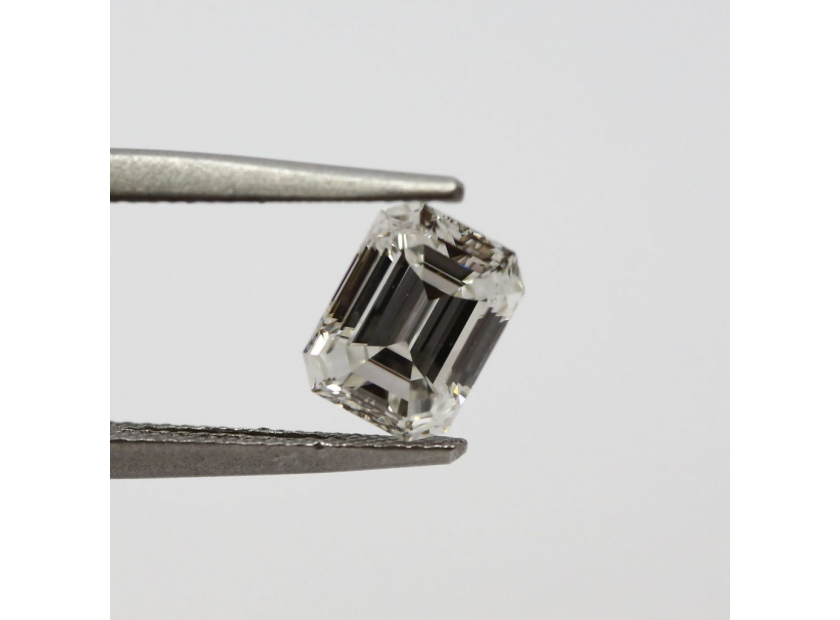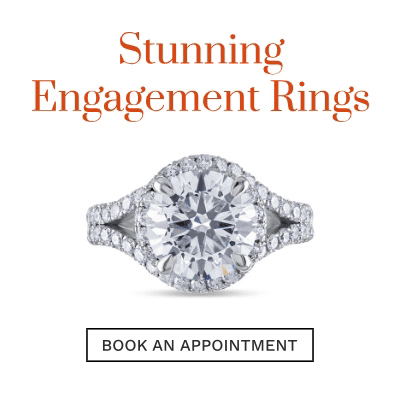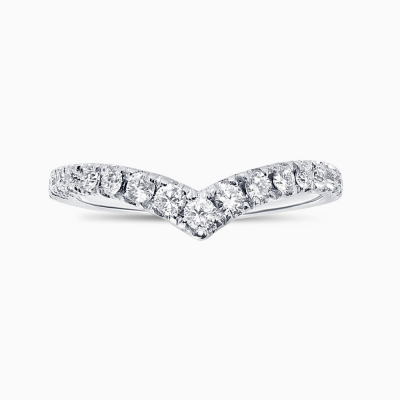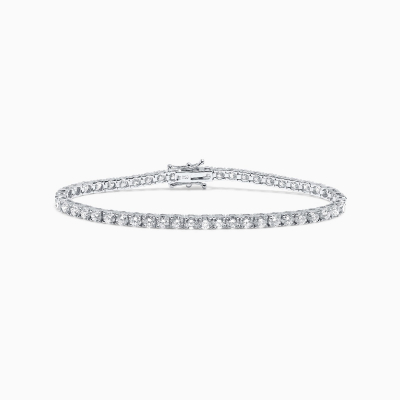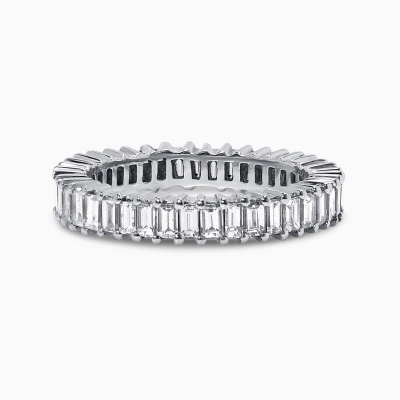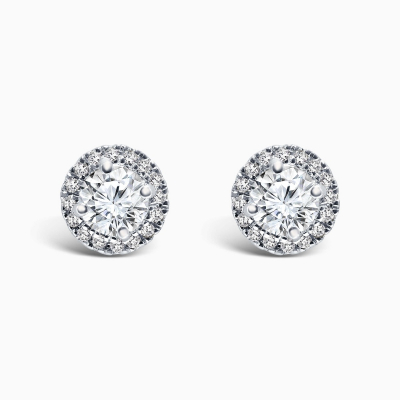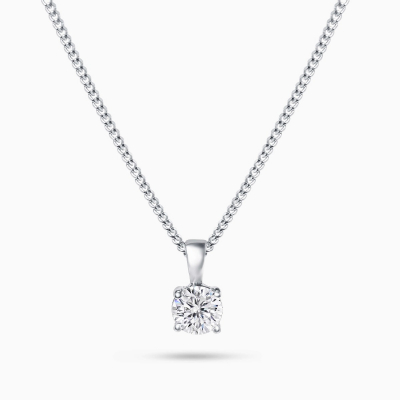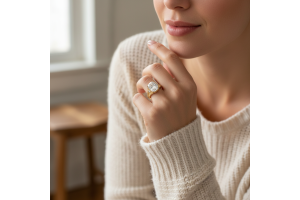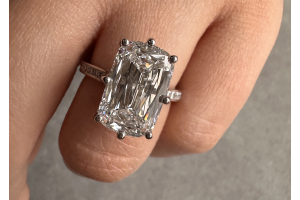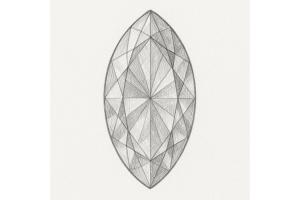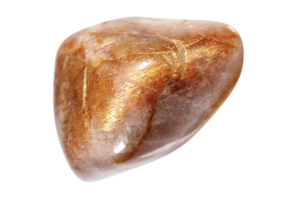GBP
/
GBP
/
Shipping to:
Currency:
Have you ever been in a jewellery store and heard the phrase “eye-clean diamond” and wondered what exactly it means and should you be investing in one? Here is a short guide to “eye clean diamonds” to help you better understand this terminology and its implications in your choice of diamond:
What Is An “Eye-Clean” Diamond?
“Eye-clean” is a term that is used in the jewellery trade associated with diamond grading. It is used to describe the clarity of a diamond that is visibly clear to the naked eye when looked at from the top and without magnification i.e. a diamond that has no visible inclusions that can be seen unaided. When looking for a good quality diamond this is an important consideration as some diamonds can disappoint with noticeable inclusions apparent when viewed with the naked eye.
How Are Diamonds Graded For Clarity?
Diamonds are graded for clarity using a 10x magnification loupe which makes it easier to view naturally occurring clarity characteristics or inclusions.The clarity of the diamond is evaluated on the specific internal inclusions and external blemishes which are then further assessed on their location, orientation and overall visibility. The less inclusions/flaws that are found in a polished diamond the more rare the diamond becomes and in turn more expensive. Clarity should not be confused with brilliance and this is a common mistake. Investing in a higher clarity diamond such as a VVS2, IF or VVS1 will not necessarily mean that you will have purchased a sparkling diamond. It is the cut of a diamond that determines the amount of light that is reflected from the diamond so caused brilliance and only rarely does clarity affect transparency, so therefore diamond clarity should be solely viewed as a rarity characteristic.
Is the term “Eye Clean” Subjective?
Using the term “eye clean” to describe a diamond does bring with it an element of subjectivity relating to how precise and robust the definition of the term is. The reasons for this are that firstly visual perception and sharpness varies from person to person i.e. some people will be able to see tiny inclusions whilst others will require the assistance of glasses to enable them to detect flaws within a diamond. Secondly, some inclusions can only be seen in certain levels of lighting which will also affect the brilliance of the stone – more brilliance means fewer visible inclusions, whereas less brilliance makes flaws more visible. Therefore whether a diamond appears “eye clean” can vary dependent upon kind of lighting that the diamond is exposed to. Thirdly, the distance from which you view the diamond plays an important factor in that the closer you get to the diamond the more likely it is that you will see an inclusion.
How Do I Establish If A Diamond Is “Eye Clean”?
Having said that the term “eye clean” carries a certain level of subjectivity, there is a method in which a diamond can be established as being within this category. If you view the top of the diamond in broad daylight with a naked eye at a distance of approximately 20-25 centimetres if you cannot clearly see any inclusions or flaws such as clouds, lines or black dots then that diamond can be considered “eye clean”.
What Clarity Grades On The G.I.A. Scale Are Considered” Eye-Clean”?
When matching the lower end of the “eye clean” clarity range to G.I.A. clarity grades the line is drawn at SI clarity, and more specifically SI2. Therefore any diamonds stones graded I1 and lower will not be considered “eye clean”. Diamonds with clarity grades of VS1 and above do not have visible inclusions and are always visually clean to the unaided eye. Diamonds that are SI2 and higher will generally look relatively “eye clean” when viewed by the naked eye. It should be remembered that you may see some inclusions in SI2 diamonds when looking from the top depending upon the lighting. For the most part these inclusions will be quite hard to spot without using a 10x magnification loupe and therefore generally, SI2 diamonds will appear “eye clean”. This is however considered a borderline grade and it separates the diamonds that are definitely eye clean (SI1 and above) from those that are definitely not (I1 and below). However, please bear in mind that the term “eye clean” refers to viewing a diamond from the top only with the naked eye therefore in some cases a SI2-clarity diamond when viewed from the side may show some inclusions. It should be borne in mind that the clarity can vary dependent upon whether you choose a Step-Cut diamond (Emerald-cut, Asscher-cut, Baguette-cut etc.) in which it is easier to see inclusions, or a brilliant-cut diamond. For step cut diamonds we recommend VS1 clarity to ensure the diamond is visibly clear to the naked eye and for brilliant-cut diamonds SI1 clarity. However each diamond is unique and must be evaluated individually.
Explore Our Collections
Does The Size Of The Diamond Have Any Influence On It Being “Eye Clean”?
The answer to this question is YES, the clarity of an “eye-clean” diamond does depend upon diamond size. For example at SI2 clarity or possible lower, a tiny 2mm diamond will appear “eye-clean” the reason for this is that the characteristics that define clarity are harder to detect within small diamonds. In comparison when viewing a larger diamond e.g. of 3 or 4 carats that is graded SI1 flaws will be more easily noticeable due to the larger table size of the diamond and this is accentuated when there are small inclusions present directly below the table facet.
Is Buying An “Eye Clean” Diamond A Good Investment?
As each diamond is as unique as the person purchasing it, there really are no hard and fast rules for buying a diamond, as they say ‘beauty is in the eye of the beholder’. However, as diamonds are mainly bought to be part of an engagement ring or other piece of jewellery, like many people you will most probably want to be sure that you get want best bang for your bucks! As the factors of carat weight and colour are more visually obvious to an onlooker, buying an “eye clean” diamond is an appropriate guideline as you will want to see a diamond that appears clean when viewed under normal conditions. Therefore perhaps place more importance upon the diamond you choose being “eye clean” rather than obsessing over its actual exact clarity grade. To illustrate this it is easier to see the difference between a 1.00ct and a 2.00ct diamond just as it is to see the difference between a ‘J’ coloured and a ‘D’ coloured diamond with the naked eye. However, if you compared a VS1 diamond with an IF diamond visually you would not be able to see the difference. This is what makes “eye clean” diamonds the most economical choice and the easiest compromise to make when choosing your diamond. It should always be remembered that “eye clean” is not an official grading category, and this is why you should decide whether a diamond is worth the price asked based on the clarity as graded and certified by an official body such as the G.I.A. We always recommend that you check the official grade of the diamond as to the untrained eye two different grades of diamond can look equally clean but in fact the higher graded diamond may be far more expensive. To avoid overpaying for additional clarity that cannot be seen to the naked eye, opt for the lowest grade diamond that is still “eye clean” in the range of SI1-SI2.
Buying Tips For Eye-Clean Diamonds
- The most prevalent inclusion in diamonds are crystals. We recommend that you choose a white/translucent or grey crystal over a dark/black crystal inclusion.
- It is generally preferable to select a diamond that does not have inclusions directly under the main table facet as this facet is the largest and easiest to see through.
- Choose a diamond which has small scattered inclusions rather than more concentrated inclusions.
- In S1 diamonds twinning wisps are quite common but they are almost always impossible to see without magnification so buying a diamond with these wisps is a great way to save money.
- Buying an eye-clean SI2 diamond stone doesn’t mean that its flaws won’t be seen from the side but if you wish to have this diamond set in a mounting that will hide its sides, then this would not be an issue. However, if the side view of the diamond is to be a feature of your chosen engagement ring or jewellery item, you would be well advised to opt for an SI1 diamond.
- I1 diamonds often have visible inclusions and are sometimes referred to as ‘prongable’ which means that an inclusion can be easily covered by a jewellery prong. However, pay special attention to I1 or lower clarity grades as these can be more vulnerable to damage through wear and tear.
- “Eye clean” diamonds with lower clarity grades can offer tremendous value for money. Just remember, when it comes time to making your final decision on the purchase of a diamond, always consult with a diamond professional such as the expert team here at Reve Diamonds to ensure that your diamond is visibly clean and not vulnerable to breakage.



